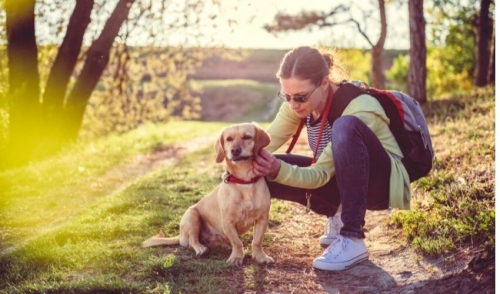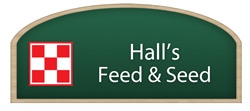{article.name}
Stop the Fleas and Ticks

- Share this:
- Share on Facebook
- Pin on Pinterest
- Tweet on Twitter
Fleas and ticks can be a big problem, not just for pets or livestock, but for humans as well. Fortunately, it is possible to stop fleas and ticks from being a bother, and there are many steps you can take to keep these pests away and prevent infestations before they start.
The Problems With Fleas and Ticks
Fleas and ticks are pernicious biting insects that, at best, cause skin irritation and itching, which can increase stress levels for all animals and may impact the overall weight and productivity of agricultural livestock, as well as impact the quality of life for beloved pets. At worst, flea and tick bites can cause allergic sensitivities to flare up and may even transmit more dangerous diseases. Depending on the region and the scale of the infestation, fleas and ticks have been documented as transmitting typhus, Lyme disease, Rocky Mountain spotted fever, tularemia, and other diseases, as well as different varieties of tapeworm. Any of these conditions can have potentially serious health complications, and in some cases, may even lead to fatalities. Stopping fleas and ticks, however, is easier than many people realize and dramatically reduces the risks associated with these pests.
Stopping Fleas and Ticks
The best solution to prevent problems with fleas and ticks is to prevent these insects from gaining a foothold in the first place. While they can be somewhat challenging to remove once an infestation has developed, it is much easier to keep fleas and ticks away in the beginning, and several easy steps can make a home, barn, garden, or property much less friendly for these unwelcome visitors.
- Keep the Lawn Short
Fleas and ticks thrive in damp, dark areas, such as sheltered by long, uncut grass. Keeping a lawn trimmed more regularly, bagging lawn clippings, and watering appropriately will minimize the habitat available for these pests to settle in. Dethatching a lawn can also help reduce compaction and improve air and water circulation at the soil’s surface, making the area less appealing to fleas and ticks.
- Trim Bushes and Shrubbery
These insects will also make themselves at home in any dense plantings, including bushes and shrubbery that may be right next to windows, doorways, vents, and other entry points into buildings and structures. Pruning these plants and trimming them away from walls will bring more light and air into their growth to discourage fleas and ticks.
- Declutter the Yard
Not only will fleas and ticks take up residence in long grass and thick shrubbery, but any piles of yard clutter can also harbor these pests. Piles of brush, logs, rocks, or bricks can be shelter for fleas and ticks, and they may even nestle into niches of plastic toys. Remove these items or store them in a cool, dry place when not in use.
- Discourage Wildlife
Many common wildlife visitors can harbor fleas and ticks, including raccoons, skunks, squirrels, possums, and deer. Keeping these animals away will minimize the risk of carrying fleas and ticks, as well as their eggs, onto your property. Invest in secure fencing and other barriers, choose deer-resistant landscaping, remove potential food and water sources, and otherwise encourage these visitors to seek shelter elsewhere.
- Choose Plants That Repel Fleas and Ticks
Some plants exude aromas, oils, or other chemicals that naturally repel fleas and ticks. Adding these plants to your landscaping, particularly near windows, doorways, walkways, and fences, will help stop fleas and ticks. Garlic, lavender, chrysanthemums, lemongrass, rosemary, spearmint, peppermint, and geraniums are all good choices to repel pests.
- Vacuum Frequently
Inside your home, regular vacuuming can not only suck up any invading fleas and ticks, but will also collect eggs before they hatch. Vacuum rugs, upholstery, draperies, and any cracks or crevices, and discard the vacuum bag outside or rinse out the vacuum canister with hot, soapy water to thoroughly remove fleas and ticks.
- Clean Animal Bedding
Because fleas and ticks will attach themselves to pets and livestock, cleaning animal bedding is essential to remove pest infestations. Wash blankets and beds and clean stalls regularly, and don’t forget to also wash pet toys, horse blankets, and similar items that could be attractive to fleas and ticks.
While each of these steps can help stop fleas and ticks from becoming a bother, it is best to use as many steps as possible for the most thorough, effective protection against these unwanted invaders. The more techniques you use, the less likely it is that fleas and ticks can become established nearby.
Treating Your Animals
In addition to taking steps to stop fleas and ticks, it can also be useful to treat pets and livestock as a last line of defense against pest bites. There are a variety of dips, powders, sprays, collars, and drops that provide different levels of protection depending on the animal’s size, health, and environment. Consult with your veterinarian about the appropriate product for your animal, and it can be one more step in stopping the fleas and ticks in their tracks.
Special Offers



Comments